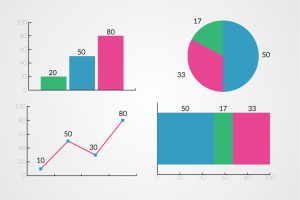Everyone loves a good story, and your customers are no different.
Stellar media that invites you to sit down and get lost in a really great narrative is difficult to resist, so it’s not hard to see why storytelling is such an essential part of today’s content marketing campaigns.
It helps an audience connect with a brand on an instinctual, natural, and enjoyable level.
Storydoing is an upgraded version of storytelling that does more than simply engage an audience.
It also encourages them to get involved and become part of the narrative in their own right for a compelling experience all around.
Here’s a closer look at what storydoing is all about in marketing today.
What is Storydoing?
How many times in your life have you heard that actions speak louder than words or been asked to show rather than tell?
Sentiments like those are more than just catchy sayings. A great story that’s well-told and inspires others the way it was meant to do is great, but a narrative that takes things into the realm of action is even better.
Storydoing has been around since 2013 and does refer, in part, to the act of crafting and telling a story.
However, this type of storytelling is done in such a way that the listener is invited to further participate by becoming part of the larger movement behind what they’re hearing.
If storytelling encourages a target audience to absorb the message behind why a company does what it does, storydoing inspires them to stand up and act on that message.
Storydoing vs. Storytelling: What’s the Difference?
If you think storytelling and storydoing sound remarkably similar, that’s understandable.
The two have much in common and even follow similar approaches. Both use the power of a compelling tale to access an audience and convince them to give a message their time and consideration.
However, the end goals, while related, are a bit different.
- Storytelling is about conveying a company’s core values — the “why” at the heart of why they do what they do.
Storydoing is about inspiring actions based on those goals. - Storytelling asks an audience to consider ideas.
Storydoing drives choices and actions that lead to better products and deeper connections. - Storytelling helps your customers believe in what you’re doing.
Storydoing convinces them to internalize your message and make it their own.
In other words, it is all about the difference between talking and doing.
How Does Storydoing Work?
Although how a particular storydoing campaign might play out will naturally vary from company to company, the basic process will always be similar.
In short, storydoing goes through four different stages.
1. Discovery
Most companies settle on their story at some point during their branding campaign.
They need to know what they stand for and the “why” behind their products before they can use those ideas to sell what they do to a target audience.
In the first stage of storydoing, you don’t replace that story or even revamp it. But you do revisit it and start to brainstorm ways to get at its essence — the core of what it’s all about.
2. Telling
How you decide to send your brand’s bigger message out there into the world is up to you and your team, so it’s OK to be creative.
But when storydoing is the end goal, you’re doing more than just telling a story. Storydoing companies are on a mission — a mission to mobilize people, empower them, and invite them to be a part of something bigger than themselves.
Consider your company’s greatest strengths. If you could inspire everyone connected to your company, from your employees to your customers, to share one thing about what you do, what would you want it to be?
Decide what story you want others to be telling about your brand for years to come, and place it at the center of your efforts.
3. Building
Putting out a great story that mobilizes your public and could potentially create a legacy for your brand is the beginning of storydoing.
You also need to act on what you’ve said, something many companies and individuals alike never get around to doing.
The building phase is when you convert your initial ideas into actions and create a company culture based on those principles.
How does your story translate into the experience you offer your employees and how you treat your customers?
In what ways do you stand behind your promises and empower those associated with your brand?
4. Benefiting
This is the end stage of storydoing where you get to reap the results of your efforts throughout the other three stages.
If you’ve genuinely developed your company and taken it to the next level, you’ll see the evidence of that growth.
Your bottom line will be healthier, your audience will be more engaged, and people will be talking about you.
Your customers will genuinely feel like they’re part of your company, and they’ll be showing that in ways that contribute back to your brand.
Great Examples of Storydoing in Action
Brands that successfully leverage the power of storydoing are easy to identify once you know what you’re looking for.
They make it a point to go beyond peppy slogans and glossy imagery. They show their clients they mean what they say and keep their promises.
The following brands are great examples.
JetBlue
The entire philosophy behind JetBlue is a desire to “bring humanity back to the airlines,” as stated by the company’s branding campaign.
That was more than just a pretty promise. It was a quest that the company accomplished beautifully.
JetBlue did this by showing their clients they were important and giving them the type of service that’s now scarce to nonexistent with other airlines.
JetBlue features only one service class, and everyone has access to it. In addition, everyone gets a leather seat, satellite TV, and free unlimited snacks.
Target
Target is another brand that’s done an incredible job of turning what they do into a comforting, trustworthy part of everyday life.
Like JetBlue, they use storydoing to honor and elevate their customers, showing them that they’re priorities who deserve to be treated like gold.
Target was among the first retailers of its type to partner with big-name designers to bring quality, style, and trendiness to the masses.
It also celebrates the value of everyday life and gives it meaning across all of its branding efforts.
Zappos
When people think of brands that bend over backward, setting a new customer service gold standard, Zappos is one of the first to come to mind.
They’re on a mission to bring impeccable white-glove service to everyone who buys from them, regardless of the cost attached.
And they treat their employees just as well. Zappos wants their customer service workers to genuinely enjoy their jobs — so much so that they’ll give them money to help them leave if they’re not in love with what they do within a couple of months.
Storytelling + Storydoing: Can You Use Them Together?
Storytelling and storydoing aren’t mutually exclusive approaches to marketing, so there’s no big decision you need to make about which one makes the best fit for your business goals.
You can and should use both if you’d like to make the most of your ongoing marketing campaign.
Think of storydoing as a way to elevate the fantastic storytelling your marketing team is likely already doing and get more out of it.
Today’s consumer wants more from the buying experience than just terrific products and services in exchange for their money.
They want to feel like their choices count for something, and they want to identify with the brands they choose on a deeper level.
Storydoing is a terrific way to give your customers that while simultaneously boosting your bottom line and making your branding efforts that much more effective.
Wrap Up: Tell the Next Chapter of Your Brand’s Story in Style
There’s nothing like an epic story to turn an already great brand into a legend, and storydoing is a terrific way to make the most of yours. (Just ask the geniuses behind Target and Zappos!)
So is taking advantage of tried and true advice from the experts.
Sit in on our recorded webinar with brand expert Andy Raskin, and learn all about successful storytelling from the very best.
You’ll discover how to create a compelling narrative for your brand, how to use it to boost your marketing results, and more.







